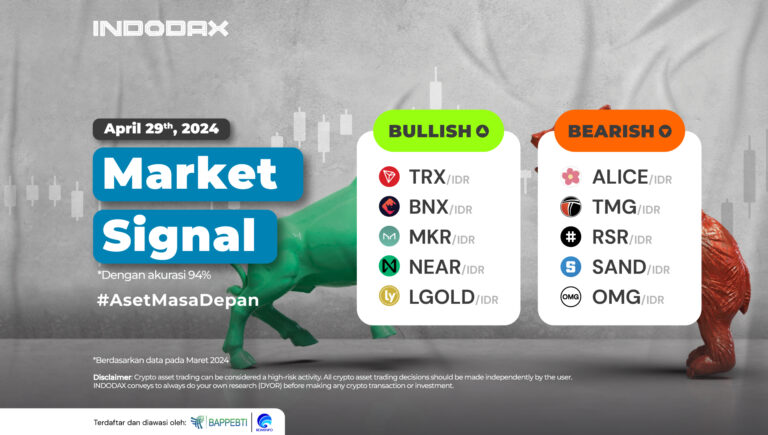Impermanent loss is among the risks of participating in the DeFi liquidity pool.
The impermanent loss is a decrease in the value of assets in the liquidity pool that occurs due to portfolio readjustments by Automated Market Makers (AMMs) triggered by fluctuations in asset (token) prices.
This is a big threat and risk for yield farmers because impermanent loss is important to understand in yield farming and DeFi protocols.
Impermanent loss is also known to reduce expected profits or cause losses for liquidity providers.
Basic Concepts of Automated Market Makers (AMMs)
Before deepening the understanding of impermanent loss, it is important to understand the Automated Market Makers (AMMs) scheme.
First introduced by one of the leading blockchain founders, Vitalik Buterin, this scheme describes the formation of markets on the blockchain without the direct involvement of supply and demand.
AMMs create software-driven markets, where market participants are incentivized with fees and yields through activities such as staking and yield farming of new tokens in the protocol or based on terms set in smart contracts.
While this scheme is considered an ideal solution for decentralized ecosystems, it has drawbacks. As a liquidity provider, when engaging in AMMs, you could potentially experience impermanent losses.
As the name suggests, these losses are not permanent. However, without proper handling, they can turn into permanent losses.
Mechanism of Impermanent Loss

It is important to remember that impermanent loss occurs when the value of tokens stored in the DeFi protocol is lower than the market price.
This happens because each liquidity pool has its own AMMs mechanism that does not always align with market conditions.
Thus, when the price of tokens locked in the DeFi protocol changes, the AMMs in the liquidity pools where you participate do not immediately follow the change.
Why the price difference? Some pools manage more than one type of crypto asset in an equilibrium ratio. However, this equilibrium point may shift with the market price volatility of the asset being managed.
Algorithms in liquidity pools have mechanisms to maintain the balance. However, impermanent loss occurs when these algorithms have not fully adjusted the market price changes to the price of your assets in the pools.
The name is meant to emphasize that this loss is not permanent. Market mechanisms will continue to operate in liquidity pools through arbitrageurs, who look for price differences between crypto markets and liquidity pools to make a profit.
Once this mechanism is complete, the value of your crypto asset will return to equilibrium with the pool ratio.
Impact and Management of Impermanent Loss
Impermanent loss in the decentralized finance (DeFi) ecosystem is similar to what often happens in centralized markets.
When your portfolio experiences price fluctuations, you will face what is referred to as unrealized loss, which must be handled with care.
When your crypto asset experiences impermanent loss in a liquidity pool, the value of your investment portfolio can become negative. However, it is important to see that this drop is not an actual loss.
If you withdraw from the liquidity pool when your asset price is out of balance, you will turn this impermanent loss into a permanent one.
One day, the balance may be restored to the starting point when the asset price comparison becomes relevant again to the value you initially invested.
However, you will miss this valuable opportunity if you are not patient and make rash decisions. So, how can you reduce or mitigate this risk?
One of the simplest ways to mitigate this risk in the short term is to add liquidity to the asset pair to keep the price relatively stable. Also, you can patiently wait until equilibrium is reached again.
Some liquidity pools form pairs of assets with relatively stable values relative to each other. Examples are the sETH/ETH pair on Uniswap or stablecoins like DAI/USDC/USDT/sUSD on Curve.
However, the downside is that stability goes both ways. You have a lower risk of impermanent loss but fewer opportunities for temporary gains due to their price stability. Also, these liquidity pools are usually limited in number.
Case Study and Analysis

Let’s look at a concrete example using real numbers to clarify our understanding of impermanent loss. Here is an example of impermanent loss, namely:
An investor, Investor A, wants to inject liquidity into the ETH & DAI liquidity pool on SushiSwap.
In this example, we assume that the total liquidity in the pool remains constant over time, no transaction fees are charged, and no liquidity is added or removed.
The current price of 1 ETH is $100, and since DAI is a stablecoin linked to the US dollar, the value of 1 DAI is $1. Thus, the balanced liquidity ratio is 50:50.
Investor A injects 1 ETH and 100 DAI into the liquidity pool. This brings his total investment to $200.
Overall, there are 10 ETH and 1,000 DAI in the liquidity pool. Based on the AMMs formula, the total liquidity in the pool is $10,000, which is calculated as (10 ETH x 1,000 DAI). Investor A’s share of the liquidity pool is 10 percent.
Within a week, there was a significant change in the market price, where the price of 1 ETH became $200 or 200 DAI. This price change causes instability between the price in the market and the price in the liquidity pool. This instability creates an arbitrage opportunity.
Arbitrage traders will likely buy ETH from the liquidity pool cheaper by 50 percent compared to the price on the external market. This will reduce the amount of ETH in the pool and increase the amount of DAI. This process will continue until the price of 1 ETH = 200 DAI.
As a result, ETH and DAI assets are redistributed to the liquidity pool. This change will be calculated using the Automated Market Makers formula by adding a new variable, “r,” which is the new ratio of crypto assets.
Conclusion
In conclusion, understanding and managing impermanent loss risk is a very important step for anyone involved in the DeFi protocol.
Along with the benefits of high liquidity and various investment opportunities, impermanent loss risks must be seriously considered.
Furthermore, wise decision-making and patience are also important and should not be overlooked when dealing with market fluctuations in the DeFi ecosystem.
In this case, investors should be able to adapt their strategies to changes in asset prices and carefully consider whether to hold liquidity for some time or withdraw it to avoid greater losses.
Ultimately, with a deep understanding of these risks and taking appropriate action, DeFi players can optimize their investment returns more effectively while minimizing potential short-term losses.








